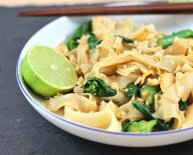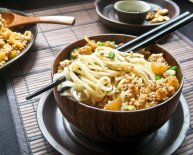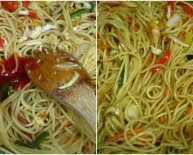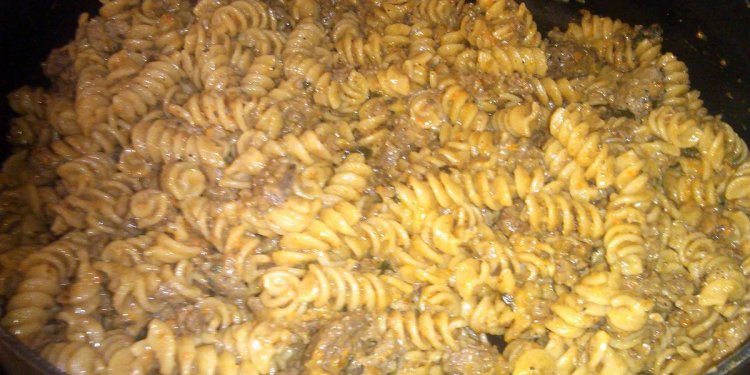
Chinese noodles recipe from Scratch
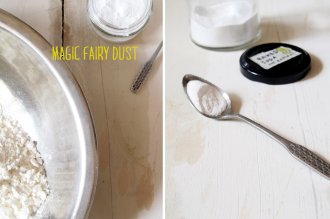 These noodles are actually not too difficult to make and strangely satisfying, because I know that they contain none of those nasty preservatives and colourings, and because, well, I MADE MY OWN NOODLES COME ON, so they aren't just a result of project-related insanity and are well worth trying for yourself.
These noodles are actually not too difficult to make and strangely satisfying, because I know that they contain none of those nasty preservatives and colourings, and because, well, I MADE MY OWN NOODLES COME ON, so they aren't just a result of project-related insanity and are well worth trying for yourself.
HOW TO MAKE ASIAN EGG NOODLES
makes 2 massive/ 3 normal portions
Ingredients
225g organic unbleached plain flour*
2 tsp baked soda (see below)
100g lukewarm water
for baked soda
baking soda (I baked a whole small tin since you can do more at a go and store)
*For a harder, more chewy texture, like in mee pok, you can use bread flour. If you're making the hokkien egg noodles aka you mian 'oil' noodles, which are a bit more slippery and soft, don't use bread flour; I get away with using my favourite white spelt flour even.Method
1. To make baked soda, spread it out evenly on a lined baking tray and bake at about 120 degrees celsius for one hour. You will lose about 1/3 of its weight in water and carbon dioixide. Keep this in a tightly sealed jar for future egg noodles/ramen making to prevent it from absorbing moisture in the air. Be careful not to touch it, it's not as strongly alkaline as lye, but it's still strong enough to irritate!
2. Dissolve 2 tsp of baked soda in the warm water, and then add this alkaline water to the flour slowly, mixing it in just till it comes together to form a shaggy dough. I don't like to add it all at a go just in case I need less or more, so play by ear, but do note this dough is kind of rough and crumbly. You will see the flour turn yellow almost instantly. Magic.
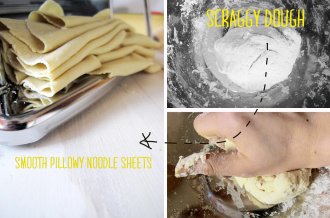 3. Knead the dough for 5 minutes, then clingwrap and set aside for 20 minutes. Work those biceps again for another 5 minutes or till you get a nice pliable dough. It's actually quite hard to knead so don't give up.
3. Knead the dough for 5 minutes, then clingwrap and set aside for 20 minutes. Work those biceps again for another 5 minutes or till you get a nice pliable dough. It's actually quite hard to knead so don't give up.
4. Wrap again and give it a final rest in the fridge for anytime from 1 hour to overnight, I did for 2 hours.
5. Cut the dough into 2 or 3 portions. Roll out each portion using a pasta machine, going from the thickest setting down to as thin a setting as you like. The final thickness and width is up to you. Keep it well floured to avoid sticking.
I've done the hokkien noodle, mee pok, and non-curly ramen noodle (in pasta terms, think spaghetti, fettucine, and spaghettini respectively).
For hokkien noodles, I only did it till the 3rd setting, and then I used the spaghetti cutter to cut into round noodles.
For mee pok, I did it till the thinnest setting, and then I just sliced it into 5mm wide flat noodles.
For ramen noodles, I did it till the 2nd setting, and then used the spaghetti cutter (if you have an angel hair cutter, even better).
6. To cook, simply drop these noodles into boiling water till cooked. The timing will depend on the type of noodle, but note as these are fresh noodles, they take really quick.
Mee pok and ramen noodles will only need a very quick blanching to keep them al dente, while hokkien noodles should have a slightly softer texture.
It's not as shocking a yellow as your usual lye-added (or, more likely, artificial colouring-added) egg noodles, but it is yellow, and it's got the right texture and taste of these noodles. Slightly chewy and with a slippery feel that makes for exceptional slurping, and that distinct jian taste. If you choose to enrich your dough with an egg yolk or as in some traditional Hong Kong noodle houses, a duck egg, you might get noodles that are more golden and also richer in taste. Or maybe you can cheat by boiling in water with a shake of turmeric, if you really must get that bright yellow.
But even sticking to this one recipe, depending on the way you cut your noodles, you could get a lot of different results (trust me, looking at the mindmap of noodles in my sketchbook, it is A LOT, in caps). I've done those three because these were the most straightforward, but you should go wild.Now back to ..more noodles. Oh one last bit, thanks Charlene for the pasta machine :) Best birthday toy ever!

